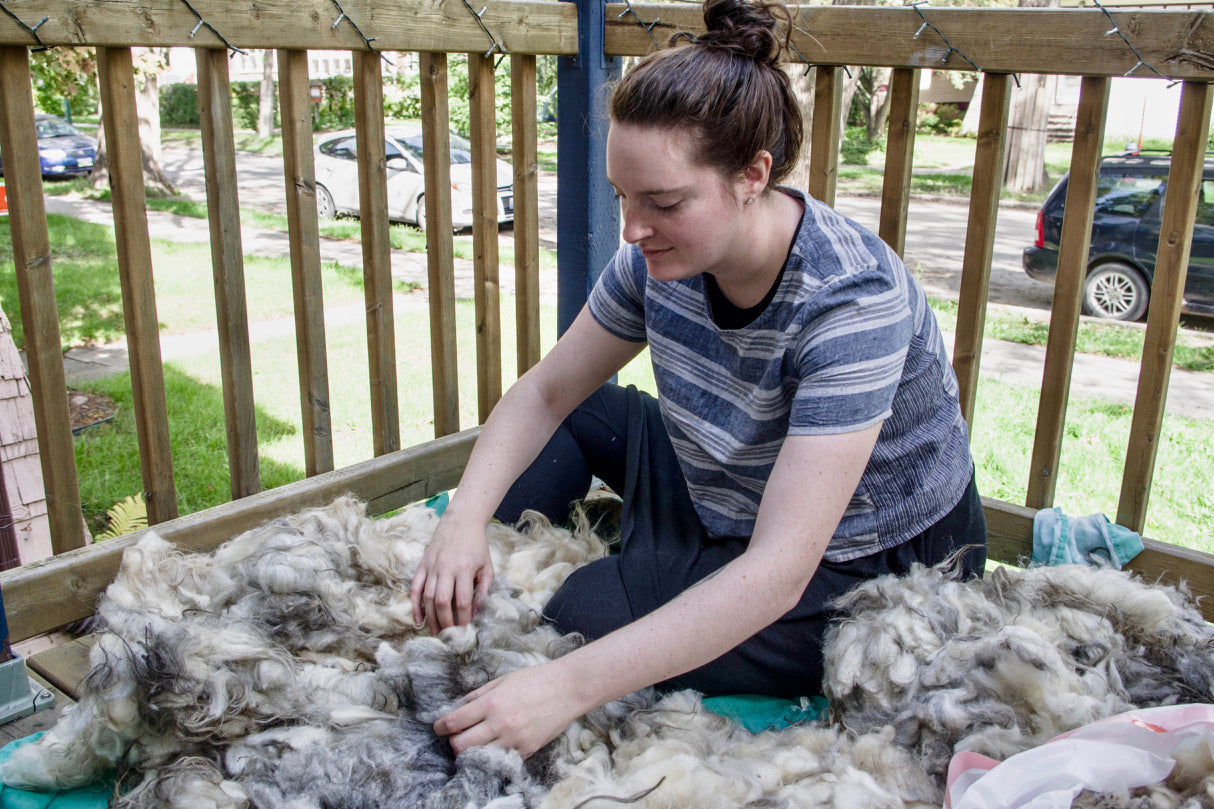About
-

About Kalea
Kalea Turner-Beckman is a yarn producer, natural dyer, hand spinner and knitwear designer living on Treaty 6 Territory in Amiskwaciwâskahikan / Edmonton, Alberta, Canada.
After studying Sustainable Development at the University of St Andrews and Communication for Development at Malmö University, Kalea returned home to Edmonton and turned to textile production to put her ideas into practice. She began her exploration into local wool as co-founder of the Alberta Yarn Project from 2014-2020, and launched Luddite Yarn in 2020.
Kalea is now a student in the Master Spinner program at Olds College, and is slowly working away at a masters thesis exploring the intersections of knitted graffiti, feminism, and post-colonialism.
Kalea also designs knitting patterns with the characteristics of natural fibres and specific wool breeds in mind. She is fascinated by how we communicate culture and gender identity through clothing and textiles, and draws inspiration from the Celtic, Scandinavian, and Ukrainian heritage of her family.
FAQ
What makes Kalea a Luddite?
The Luddites were a radical faction of textile workers in 19th Century England who protested against the Industrial Revolution by sabotaging the machinery that was putting them out of work. They weren’t so much against technology, but rather fought the loss of autonomy and skilled craftspersonship that the shift entailed.
In the spirit of the historical Luddites, Kalea the Luddite works to disrupt our broken modern textile systems. All wool is sourced from small family farms where the land is allowed to regenerate, the sheep are treated with care and respect, and the farmers are paid fairly for their products. The fleeces are sorted by hand, and processing decisions are made with deep knowledge of woolen and worsted spinning techniques as well as the natural properties of specific heritage wool breeds.
When technology is used in mechanized spinning and machine knitting, it is done so in family owned fibre mills where workers are valued for their skills and labour, and have a voice in how their work gets done.
Why are there knots the yarn?
The yarns are spun at Custom Woolen Mills using an industrial revolution era spinning mule that mimics the motions of hand spinning. Due to the small bobbin size of the spinning mule, knots in the yarn are a necessary part of the manufacturing process, it is normal to find a couple knots in each skein.
Where do the dyes come from?
Most of my dyes are either foraged from my local ecosystem, grown in my garden, or are kitchen scraps and garden waste collected from around my home. When foraging for local plants, I only take what can be harvested responsibly. More than just working to reduce my harm to the environment, I try to forage in a way that’s beneficial to the ecosystem, focusing on removing invasive species and harvesting native plant populations in ways that encourage and support their growth. Yellows, greens, oranges, and browns are abundant in nature, but blues and reds are a little trickier to find. I supplement my local colours with imported traditional dyes like madder and logwood.
Are natural dyes colourfast?
I only use natural dyes that are relatively washfast and lightfast, but all dyes, including synthetic ones, can fade over time. Store yarns and finished items out of direct sunlight when not in use, and hand wash with pH neutral soap to preserve the colours for as long as possible. Yarns are rinsed thoroughly after dyeing, but don’t worry if the colours run a little the first couple times you block or wash your finished objects, this is normal, and does not mean that the dye will wash out or transfer to other garments.
How eco-friendly are natural dyes?
Natural dyes are derived from plants and insects rather than petrochemicals, and I prefer them to synthetic dyes for the way they connect me to the land and to historical practice. But no colour is completely free from environmental impact. Natural dyeing uses more water than synthetic dyeing, and most natural dyes require the use of metal mordants to fix the pigments to the fibre. While I only use food grade alum and small amounts of iron that can safely be disposed of down the drain, I am conscious of the impacts of the mining industries that produce these mordants. I’m experimenting with dyes than can avoid or reduce the use of mordants, and only use the smallest necessary amounts of these metal salts.

